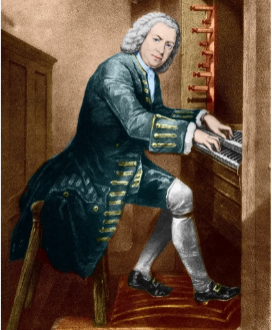Composed in two sets, dated 1722 and 1742, Well-Tempered Clavier is a testament to Bach’s genius. In the 48 pairs of preludes and fugues containing all 24 keys, Bach endows every key with a distinct character and mood through his own tuning, which works equally well with all keys.
The ‘Clavier’ in the title means keyboard. However, different from modern piano, it refers to harpsichord, clavichord, and organ. These were Bach’s tools and his paintbrushes to create a kaleidoscope of sound.
As you can imagine, the influence of WTC is huge. Though not officially published until 1801, it spread through Europe like a musical wildfire, shaping the minds and fingers of generations of musicians. WTC was composed to be pedagogical, for “musical youth desirous of learning.” As an interesting fact, Bach himself utilized WTC to educate his son Wilhelm Friedemann Bach, and even Beethoven grew up learning this series of works. This makes the work a milestone, as it was not only a bold challenge to the tuning system during the era, but it also marked and laid the foundation of a new chapter in music, inspiring future generations. The influence continues as time goes on, and WTC has become a must-play for every pianist nowadays.
To me, the true magic of WTC lies in the possibility of interpretation left for every musician. People can play the same piece but give off totally different vibes. When I am playing BWV 860, it feels like a dance, lively and soothing. However, my dance is just one of countless interpretations. In the hands of another musician, these same notes might possess a much more holy feature, or the baroque grandeur might be more prominent. I would describe Bach’s music as a vast sea. Just as the sea never truly repeats a wave, each performance of these pieces brings something new to the surface, and like a sea, the music is timeless and inclusive of every interpretation.
No. 15, Prelude and Fugue in G major is in the lightest and most spirited key. Along with the 24/16 time signature for the right hand and a lively tempo, the prelude possesses a playful feeling. The bouncing octaves on the left hand and the arpeggiated chords in triplets on the right hand show the exquisite imagination of Bach.
The exuberance continues to dominate the Fugue. The theme has a swaying feeling, including two big leaps, which reinforces the playful character and increases the tension of the piece. As the other two voices are introduced, three intertwining dances of joy and dignity are shown to the listener vividly while the double leap keeps reminding people of the theme. Like in his other Fugues, Bach ingeniously develops and presents the central theme with different textures and techniques, showing his intellect like a mathematician and emotions like an artist. The Fugue comes to the ending with an octave in G in the bass, giving a feeling of returning and a triumphant conclusion after a gleeful journey.
 Tempus Magazine By Students, For Students
Tempus Magazine By Students, For Students 



